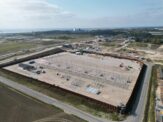
Are you on a path into a process wilderness? (Part II)

If Business Process Management is failing then what does the path to failure look like? Business process implementation successes are widely promoted, its failures are hidden. Often we learn more from a failure than a success. This is the second part of a story about a company that did everything right and still ended up failing. Read Part I first, then this second part and then consider where your company’s path leads to.
The story is about Nordic Market. Nordic is a Scandinavian supermarket chain. It doesn’t exist. It’s a summary of 12 real cases from industries such as transportation, shipping, manufacturing, beverages and engineering. I know their stories, their aspirations and their worries because I talk with their executives, their managers and their front-line people every week.
The first part ended at the height of Nordic’s success. They had just implemented their new ERP system and were now rolling out their change management plan by using the widely used ADKAR method. (“ADKAR” stands for the phases of Awareness, Desire, Knowledge, Ability and Reinforcement.) This second and final part is about how their change program was run.
The change program is starting
“Awareness” was achieved at a well-planned town hall meeting at HQ. For years Nordic had held an annual leadership day. It included all managers down to the level of the store manager. This day was dedicated to creating attention to the new ERP system and the benefits that it would bring to Nordic. At the end of the day, Nordic’s CEO made it clear that the annual bonus depended on a successful rollout of the new ERP system. A clear individual incentive was now in place and it was therefore assumed that all managers at Nordic would have a “Desire” to succeed.
When Nordic’s store managers returned from the leadership day when they first started to get concerned. “Now we have just managed to get our store operations in order. How can we find time to implement new processes?” Fortunately, they soon received emails with invitations to attend ERP system training. Every store manager should ensure that he or she was trained along with two super users.
The training was well planned. The change team instructed via so-called use cases. The use cases covered day-to-day tasks that were completed in the new systems. It was difficult to navigate the new system at first but the documentation was in place and the middle managers were told that they always could call the central help desk. They now knew how the ERP system worked in a basic way.

Try Gluu for free
Sign up for a 30-day trial.
No credit card required.
The new processes and the new ERP system go live
The go-live date came and the ERP system went live. This was the time when reality hit them. Many of their daily tasks such as ordering new goods, reconciling each day’s turnover and introducing new employees had previously been executed by each store manager in his or her own way. Their individual practice had often been perfected for years. Now all the little tasks that they had done had suddenly disappeared into an ERP system. Some had disappeared entirely and other new tasks had been added.
This raised a number of new questions every day. What was new? What was to be done the same way that it had always been done? When does the system execute the action and when do I need to do it? It was very hard to find the balance between the old ways of working and the new. The work was the same but the common way of executing it was very different.
The year when reality hits Nordic
The first year would become very difficult for Nordic. The finance department did not get its numbers on time. When they did then it proved difficult to consolidate numbers from all the stores. This caused a lot of stress on the executive floor. In stores all over the country, store managers spent many evenings trying to complete the business processes.
The central team and the Board of Management followed up by investing in modifications, in training and in improved help and support. Despite their efforts the first year became a year of uncertainty, frustration and a lot of overtime. Every day store managers and other middle managers were asked countless questions by their subordinates that they couldn’t answer. They then forwarded these to the ERP program office. This provided only general, high-level answers within 24 hours. The support team at the central office didn’t have hands-on experience with running stores.
The initial belief that Nordic was on a path into substantially improved operations was now gradually being replaced by doubt – especially among lower-level employees. “We have always been able to report our daily numbers without any problems. Now we have to spend time on the solution to a problem that isn’t there!”
Time passed. (It is at this moment that two of every three change programs fail.) Nordic kept going. The investment in the system and business process implementation was already too large to accept any failure.
Two years after The program is completed
Redemption. A little more than two years after starting the journey on the business process implementation, the project leader could report to the Board of Management that all project objectives had been met. All processes were running and were supported by the ERP system. The old systems had been phased out, the ERP system operations had been transferred to the IT department and process governance was safely in the hands of their newly formed “Process Excellence” team. The central finance and HR functions benefited from a lot of process automation and they could not let go of some employees and suppliers. The business case was back on track. The “Ability” phase of the change plan had been completed.

Try Gluu for free
Sign up for a 30-day trial.
No credit card required.
In the stores, most store managers felt relief. Finally, it was over. Getting the new ERP system and the business process implementation to work in an already busy daily schedule had taken its toll on most of them. Many store managers had had to ask a lot from their teams and also from their families. Too many late evenings at work. Now most of them just wanted to “get back to normal”.
Nordic’s Board of Management then decided to open new stores in Sweden. This meant that the executives’ attention shifted away from the Process Excellence work. The program office was disbanded since operations had been transferred to the IT Helpdesk and the new Process Excellence Team.
From being responsible for their own store’s operations store managers and other middle managers now started to focus on the requirements that arose from the need to fill in forms in the ERP system. Compliance with the demands from headquarters became a new top priority. This meant that middle managers gradually forgot, or avoided, doing many of the “manual” steps in many of the new business processes. Small important tasks such as verifying numbers, cleaning up data and communications were dropped. No one seemed to notice anyway. Most manual tasks were indeed visible in the 500 process diagrams but only the Process Excellence team looked at them now. The thinking in the stores was that “if HQ and the system do not ask for these tasks to be executed then why should I bother.” After all, their incentives were tied to delivering numbers through forms.
The Board of Management then evaluated their ERP and Business Process Management journey. Important objectives of their three-year strategic plan could be checked off. The ERP project went over schedule and budget but it was still a lot better than what they saw at other companies. It was a success. The consultants also showcased it as a success story on their websites.
Deep down Bent Pettersson, the SVP of Supply Chain was worried. What will my middle managers say when I break the news that from now on all our processes must be improved continuously in regular annual cycles? Then the change process will start all over again. His thinking circled around a key question that had been following through many similar implementations: “Why is it so hard to turn business processes into a successful work practice?”
Is Nordic Market a typical BPM implementation case?
This case study leaves out a lot of nuances for the sake of readability but it still reflects the current “best practice” that I see in Northern Europe – not in theory but in practice. It is the same two to four ERP vendors and the same five to eight multinational consultancies that assisted Nordic which also assist in the majority of multinationals’ ERP and Business process implementation. They use a waterfall method with similar tools and methods as Nordic. The projects are often completed and sometimes they do deliver cost reduction through automation. This means that business cases can be positive from a pure cost reduction perspective.
However, with respect to the organization’s future capacity to change then, they leave the employees in many companies in the same situation as in Nordic Market – cynical and disillusioned. Fed up with new initiatives from the executive floor. Consultants and system vendors move on to the next implementation while the customer’s employees are left with workdays that are even more complex than before. From feeling responsible for running business entities they are now responsible for providing numbers.
It is, therefore, time to find another path towards the process-driven company and the business process implementation. My observation is supported by numbers from the 2013 survey from the Process Excellence Network where the share of executives that find their process excellence programs successful has dropped from 69.2% in 2009 to only 51.7% in 2013. And then they haven’t even asked the middle managers and frontline staff!
PS.
The first post has received a lot of attention on the internet with people such as Gartner analyst Samantha Searle noting some of the mistakes that companies are making in her blog post devoted to analyzing this case further. The focus is on classics such as clear goals, accountability and being too tool-centric. Still, no one seems to care too much about the people that will have to work with the processes in the end? How are they involved? Do they feel a sense of how?

Try Gluu for free
Sign up for a 30-day trial.
No credit card required.
Interested in exploring how to make processes agile?
Check out our simple process mapping guide.
Frequently Asked Questions
The process of digitizing services brings about a multitude of new opportunities both for businesses as well as customers. For businesses, it opens up new avenues to streamline operations, reduce costs and enhance productivity. It eliminates manual errors, speeds up service delivery times, and enables 24/7 availability. For customers, digital services improve the user experience by offering quicker, more reliable services accessible from anywhere.
Gluu’s Process Wilderness model is designed to help businesses map out and navigate their processes better, regardless of complexity. This model aims to make overwhelming and chaotic processes more manageable and understandable. Therefore, it can be an effective solution to simplify a variety of complex business operations.
The core difference between Process Forums and Process Projects under the Gluu framework lies in their objectives and scope. The Process Forum is a management model to ensure daily processes are being carried out correctly, and potential issues are resolved promptly. On the other hand, the Process Projects are specifically designed for implementing significant changes or new processes within an organization. Therefore, while forums deal with everyday process management, projects are focused on major process changes or implementations.
About the Author






